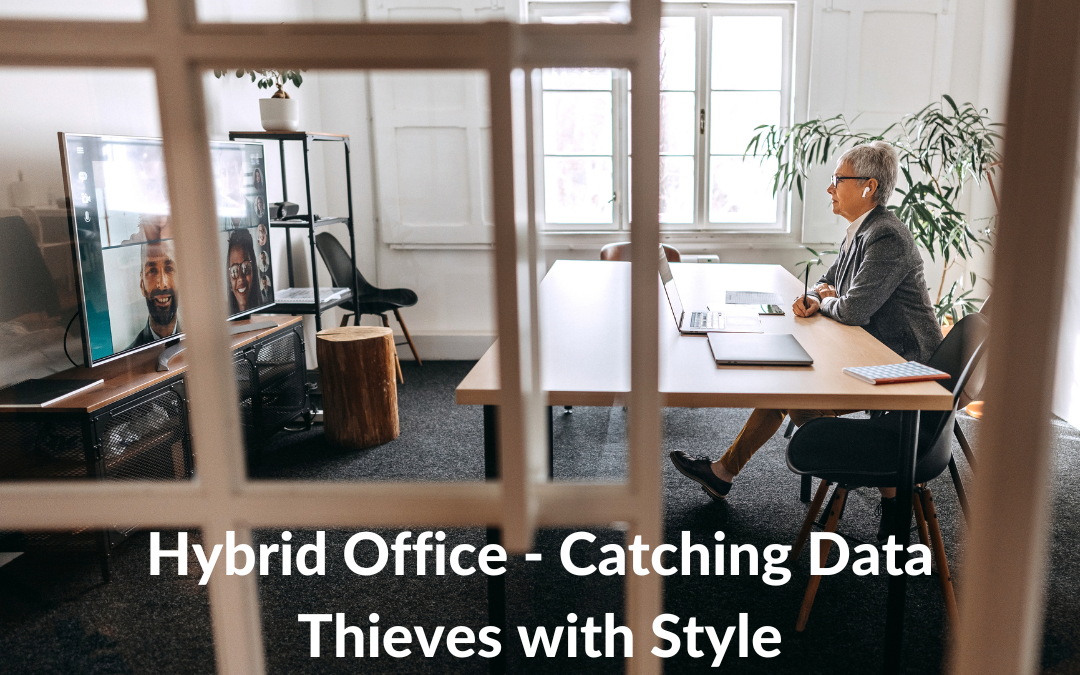The hybrid working model became increasingly popular during and since the pandemic. It has brought benefits to individuals and organizations alike, such as increased flexibility and lower overheads. It has also been beneficial for the environment by reducing commuting. However, security teams face a new challenge in responding to vulnerabilities and cyber threats due to remote work practices; phishing attacks are more likely when staff is not in the office, which presents opportunities for criminals. In addition, despite many employees now being familiar with this way of working, adapting to new strategies is still proving difficult.
Detecting data breaches can be challenging, even when organizations use the same network and employ various security solutions such as antivirus and anti-malware. Organizations may often only know that a system breach occurred once they receive a notification from a third party or trace stolen data back to them. Hackers work hard to avoid detection, so “dwell time” – the time between the breach and its discovery – has increased. Additionally, human error often plays an essential role in data breaches; for example, mistakenly CCing someone instead of BCCing them in an email or clicking malicious links in phishing emails could lead to compromising sensitive information.
Investing in the tools is required to ensure the security of your data that contains personal information and is essential, or else you may face regulatory fines and penalties under state privacy acts.
Password Protection
Due to the sheer number of online accounts, with an average count of 175, many users find it challenging to keep track of all their passwords. Use a Password Manager, like 1Password, to ease the process and increase security. This way, you can store your passwords without worrying about remembering or keeping them safe.
Malware / Ransomware
Malwarebytes is a cost-effective option for protecting against malware and ransomware. First, however, ensure it is separate from any other security tools or solutions you already use.
Windows System Utilities (Hidden right inside Windows)
- Windows Memory Diagnostic
- Resource Monitor
- Performance Monitor
- Computer Management and Administrative Tools
- Task Scheduler
- Event Viewer
- Shared Folders
- Device Manager
- Disk Management
- Services
- Advanced User Tools
- Disk Cleanup
- Local Group Policy Editor
- Registry Editor
- System Configuration
- System Information
Defragmentation
It is essential to do regular maintenance by using the defragmentation tool (included in Windows) as it helps prevent the harmful effects of writing and removal of files to the disk drive on their performance.
Database & Mailbox Recovery
DiskInternals Mail Recovery provides a powerful tool that lets you quickly find, restore and repair damaged Outlook Express, Vista Mail, Microsoft Outlook, Thunderbird, and TheBat email databases on disks that have been severely corrupted or damaged.
Post-Infection removal
FixMeStick is not like other standard antivirus software. Instead, it restarts your computer using a system on the USB drive, eliminating any viruses and malware undetected by additional security or antivirus programs.
System Migration
Any backup solution employed must be capable of taking system image snapshots and restoring them onto dissimilar hardware.
Data Recovery
Even when you take all preventative measures, data destruction, deletion, and reformatting can occur or otherwise be lost. To recover from such a loss, one must restore from the backups – either file or image.


